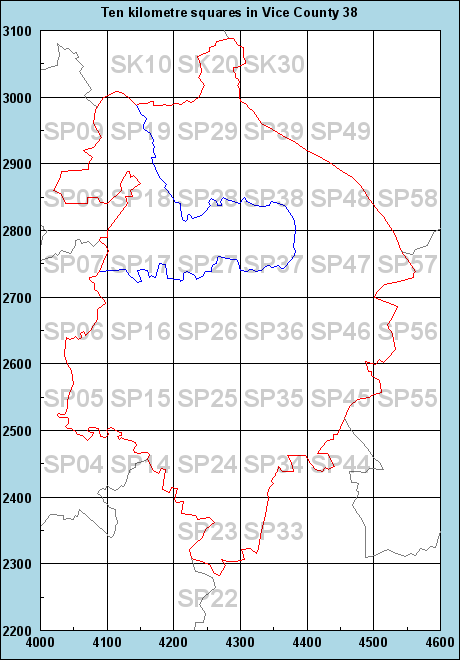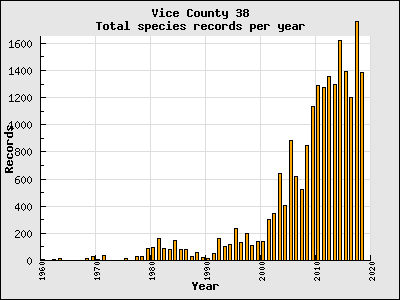|
|||
Atlas of Damselflies and Dragonflies in Warwickshire (V.C.38)There are few rare or endangered species in Warwickshire but several species which are at or about the northern limit of their range here. Observers in the county are well placed to watch the fortunes of these species and in recent years some have increased both their numbers and distribution. Some of the perceived increase may be the result of a greater interest in dragonflies but much of it is believed to be real and of great interest. The Atlas provides a review of the known status of dragonflies and damselflies recorded in Vice County 38 (that is the county of Warwickshire before the formation of the West Midlands) up to the current date. For each species there is a page of the Atlas. On each page there is a distribution map of sightings in the county (produced using OS OpenSpace) and a short commentary on the species' status. The maps differentiate between records for the current year and the periods 2000 to the current year and up to 2000. There is also a histogram (produced using JpGraph) showing the number of adult records for each two week period through the year; this gives an indication of expected adult activity, at least for species with good numbers of records. For a sample page, see that for the Southern Hawker Aeshna cyanea. The data used to assemble the maps are computer based and held in
Darter
- a special Biological Recording Database developed for the BDS.
There
is
fairly good coverage
of
the
county and in recent years there has been an increase
in
the
number of sightings
recorded.
The distribution maps are updated as more records are made
available
to
the author. These can be for past observations (particularly for
the
period
after 1990) or new ones as they become available. When
supplying
records to the author at peteratreeve60dotorgdotuk please try to
ensure
they comply with the form requested in the recording
information document.
Records
of rarer species and any observation that might confirm species
breeding
are particularly welcome. New species can be encountered in the
county.
For
example, the first record for the Club-tailed
Dragonfly Gomphus
vulgatissimus was in 1997, for the Scarce Blue-tailed
Damselfly Ischnura
pumilio in 2002 and for the Small Red-eyed
Damselfly Erythromma
viridulum
2004. Species to watch for are the Downy
Emerald
Cordulia aenea and Scarce Chaser Libellula
fulva.
The
latter
was found for the first time on the Avon in Worcestershire
in 2004.
Vice County 38 is outlined in red and the intrusion of the West Midland County into the Vice County in the North-West is shown in blue. The current county of Warwickshire is that part of V.C. 38 excluding the West Midland intrusion. All the National Grid 10 kilometre squares that cover V.C. 38 are marked. Most are in 100 kilometre square SP (42) with just the three Northern squares in SK (43). Note that some of the squares round the periphery contain only very small areas of V.C. 38.
This map shows the total number of
records
in the Darter data base for each 10 Kilometre square in V.C. 38.
Many individuals and organisations have contributed records over the years. Contributors page lists the names of those known.
Banner artwork by Joan Sharrett
|


